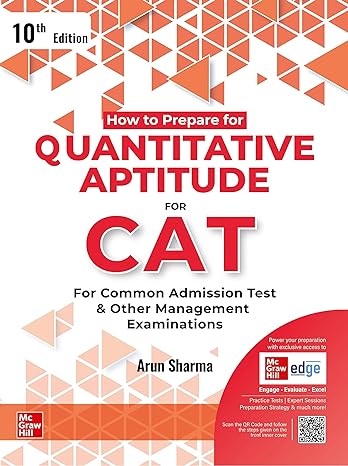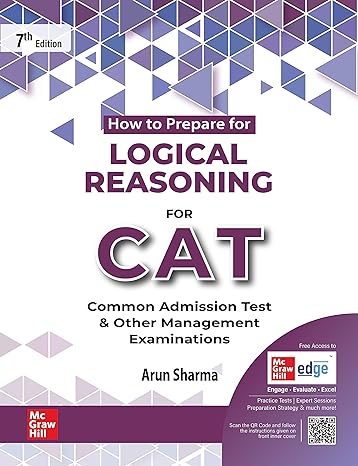SNAP STUDY MATERIAL PDF
I hope you all are doing well. This article will help you access free study material for the SNAP exam. Everyone cannot make it to the coaching centres, nor all coaching provide free study material. The links will take you to some free sources available on the internet. Click on the links, download the data and get started. Don’t forget to SHARE this page and SPREAD Awareness.

SNAP VA/RC NOTES
| SNAP VARC Topics | PDF Notes |
| 99 RC with Solution | Download |
| Sentence Correction | Download |
| Parajumble | Download |
| Reading Comprehension Tricks | Download |
In order to excel in the RC section, one must accept the fact that a lot of reading hours are required.
You can read Newspapers, Novels, Magazines etc. You must allocate at least 45 minutes from your daily schedule to the reading activity.
In addition to offline reading, I would personally request everyone to carry out the reading activity on screens like smartphone, laptop etc. The actual SNAP paper would be on Computer Screen so do develop a habit of reading on screen.
SNAP QUANT NOTES
| SNAP Quant Topics | PDF Notes |
| Handwritten Notes | Download |
| 101 Quant Shortcuts | Download |
| Quant Tricks | Download |
| 100 Must Solve Quant Questions | Download |
| Quant Question Bank | Download |
This can be a painful section for engineers as well as non-engineers. The past question papers show the ability of the Quant section to ruin the happiness of SNAP aspirants with its level of difficulty.
The plan for Quant is very simple:
- Understand the concept
- Practice the concept questions without a timer
- Sectional mocks to explore strong and weak areas
SNAP DILR NOTES
| SNAP DILR Topics | PDF Notes |
| Handwritten Notes | Download |
| 300 Sets of DILR | Download |
| Solved DI Sets | Download |
DILR, again a mate who ruins the complete game but definitely not an uncertain section. You can be very obvious about your scoring ability in Quant and DILR with practice sessions.
SNAP Formulas PDF
| TIME SNAP Formula | Download |
| SNAP Formula PDF by Cracku | |
| Permutations and Combination | Download |
| Simple and Compound Interest | Download |
| Mixtures and Alligations | Download |
| Bayes Theorem & Conditional Probability | Download |
| Progression & Series | Download |
| Time, Distance, Speed & Work | Download |
| Number System | Download |
| Geometry/Mensuration | Download |
| Linear Equations | Download |
| Quadratic Equations | Download |
| Venn Diagrams & Set Theory | Download |
| Profit & Loss | Download |
| Inequalities | Download |
| Logarithm, Surds & Indices | Download |
| Ratio and Proportion | Download |
| Remainder Theorem – Fermat | Download |
| Remainder Theorem – Euler | Download |
| Remainder Theorem – Chinese | Download |
| Remainder Theorem – Wilson | Download |
| Handwritten SNAP Formula Book by Non-Engineer | |
| Averages and Mixtures | Download |
| Mensuration | Download |
| Coordinate Geometry | Download |
| Geometry | Download |
| Trigonometry | Download |
| Time, Speed, Distance | Download |
| Time and Work | Download |
| Simple Equations | Download |
| Simple & Compound Interest | Download |
| Ratio and Proportion | Download |
| Profit and Loss | Download |
| Number System | Download |
| Percentages | Download |
| Permutations and Combinations | Download |
| Golden Book for CAT | Download |
SNAP Preparation Books
First of all, you should understand the mindset behind purchasing books for offline study
- Of course for conceptual clarity and practice
- Whatever you read online on different websites etc., you have to write down notes for preparation purpose. A hardcover book is always handy against straining your eyes on gadgets
- A book will help you to swap between topics very easily
The books are mentioned below. Kindly purchase them from Amazon using the following links. (It will help the channel)
Books for SNAP Preparation
| Quantitative Aptitude
|
Logical Reasoning |
| Verbal Ability and Reading Comprehension | Data Interpretation |
SNAP Study Material: Complete Guide to Syllabus, Preparation Strategy, and Cut-off Data
The Symbiosis National Aptitude (SNAP) Test is a national-level management entrance exam conducted by Symbiosis International (Deemed) University for admission to its 16 MBA institutes. With thousands of aspirants competing for a limited number of seats, preparing efficiently for the SNAP exam is critical. A structured approach to studying, coupled with the right resources, can make a big difference in your performance.
In this comprehensive guide, we will walk you through the detailed syllabus, preparation strategies for each section, and important cut-off data to help you plan your preparation effectively. This article is crafted for aspirants looking to achieve top scores and rank high in SNAP.
Table of Contents
- Overview of SNAP Exam
- Detailed SNAP Syllabus
- General English (GE)
- Quantitative, Data Interpretation & Data Sufficiency (QA, DI, DS)
- Analytical & Logical Reasoning (ALR)
- Effective Preparation Strategies for Each Section
- Study Materials and Resources
- SNAP Cut-Off Data
- Conclusion
1. Overview of SNAP Exam
SNAP is a 60-minute exam consisting of 60 questions divided into three sections. It is conducted once a year, and the results are used by Symbiosis institutes to shortlist candidates for their MBA programs. The exam is conducted in English, and the questions are of multiple-choice format. There is a negative marking of 0.25 marks for each incorrect answer, while each correct answer awards 1 mark.
Key Features of SNAP Exam
- Duration: 60 minutes
- Total Questions: 60 questions
- Sections: Three (General English, Quantitative Aptitude & Data Interpretation, Analytical & Logical Reasoning)
- Marking Scheme: +1 for a correct answer, -0.25 for an incorrect answer
2. Detailed SNAP Syllabus
The SNAP syllabus is divided into three major sections. Each section tests specific skills and knowledge areas crucial for a management career. Let’s dive into the details of each section.
A. General English (GE)
This section evaluates your command over the English language, testing reading comprehension, grammar, and verbal reasoning. The section focuses on the following areas:
- Reading Comprehension: Passages of medium to short length are provided, with questions based on understanding, inference, and vocabulary.
- Vocabulary Usage: Questions on synonyms, antonyms, fill in the blanks, idioms and phrases, and one-word substitutions.
- Grammar: Error detection, sentence correction, and fill-in-the-blanks based on grammar rules.
- Verbal Reasoning: Questions like analogy, para jumbles, sentence rearrangement, and critical reasoning.
Important Topics in General English:
- Vocabulary (Synonyms, Antonyms)
- Idioms and Phrases
- Para Jumbles
- Sentence Correction
- Reading Comprehension
- Analogy
- Fill in the Blanks
B. Quantitative Aptitude, Data Interpretation, & Data Sufficiency (QA, DI, DS)
The Quantitative Aptitude section tests your mathematical skills, focusing on problem-solving abilities. Data Interpretation requires analyzing data presented in charts, graphs, or tables, while Data Sufficiency checks your ability to judge if the given data is enough to solve a problem.
Important Topics in Quantitative Aptitude:
- Arithmetic: Percentages, Profit & Loss, Simple & Compound Interest, Ratios & Proportion, Averages, Time & Work, Time & Distance
- Number System: LCM, HCF, Prime Numbers, Divisibility Rules, Factorization
- Algebra: Equations (Linear and Quadratic), Inequalities, Sequences & Series
- Geometry: Lines, Angles, Triangles, Circles, Mensuration (Area & Volume)
- Data Interpretation: Bar Graphs, Pie Charts, Line Graphs, Tables
- Data Sufficiency: Judging if the provided data is adequate to answer a question
C. Analytical & Logical Reasoning (ALR)
This section examines your logical thinking, pattern recognition, and analytical abilities. It includes puzzles, series, seating arrangements, and other forms of deductive reasoning.
Important Topics in Analytical & Logical Reasoning:
- Critical Reasoning
- Blood Relations
- Directions
- Series and Sequences
- Coding-Decoding
- Venn Diagrams
- Clocks & Calendars
- Syllogisms
- Matrix Arrangements
Each of these sections plays a crucial role in the final score and demands specific preparation strategies.
3. SNAP Preparation Strategies for Each Section
A. General English (GE) Preparation Strategy
- Reading Comprehension: Practice passages daily from newspapers or online sources. Focus on improving your speed and comprehension by timing yourself during practice.
- Vocabulary: Make it a habit to learn 5-10 new words every day. Use flashcards, apps like Quizlet, and vocabulary books such as “Word Power Made Easy” by Norman Lewis.
- Grammar: Focus on basic grammar rules. Books like “Wren & Martin” are a great resource. Practice exercises on sentence correction, error spotting, and fill-in-the-blanks from mock tests and sample papers.
- Verbal Reasoning: To tackle para jumbles and analogies, practice from previous years’ SNAP papers. Understanding the logical flow of ideas is critical for para jumbles.
Study Material Suggestions:
- “Word Power Made Easy” by Norman Lewis
- “High School English Grammar & Composition” by Wren & Martin
- SNAP mock tests and sample papers
B. Quantitative Aptitude (QA) Preparation Strategy
- Conceptual Understanding: Start by strengthening your basics in arithmetic, algebra, and geometry. Books by R.S. Aggarwal and Arun Sharma are highly recommended.
- Data Interpretation: DI questions can be lengthy and time-consuming, so focus on improving speed. Practice different types of data sets like tables, graphs, and charts.
- Mental Math: Work on mental math skills to save time during the exam. Learn shortcuts and tricks for calculations.
- Time Management: Practice mock tests with a focus on time-bound problem-solving. The more familiar you are with various question types, the quicker you can tackle them during the actual exam.
Study Material Suggestions:
- “Quantitative Aptitude for Competitive Examinations” by R.S. Aggarwal
- “How to Prepare for Quantitative Aptitude for the CAT” by Arun Sharma
- SNAP mock tests for Data Interpretation
C. Analytical & Logical Reasoning (ALR) Preparation Strategy
- Puzzle Solving: Logical reasoning is all about patterns and critical thinking. Practice puzzles, seating arrangements, and coding-decoding regularly.
- Visual Reasoning: Many ALR questions involve visual patterns and sequences. Familiarize yourself with these by practicing from previous exams and reasoning books.
- Practice Makes Perfect: Regularly solve mock tests and past year papers. Reasoning questions are varied, so exposing yourself to different patterns helps build familiarity.
- Time Efficiency: This section can be tricky. Allocate time to solve easier questions first and come back to more complex ones if time permits.
Study Material Suggestions:
- “A Modern Approach to Logical Reasoning” by R.S. Aggarwal
- SNAP mock tests and reasoning puzzles online
- Practice papers from previous SNAP exams
4. SNAP Study Materials and Resources
To maximize your SNAP preparation, utilizing the right resources is essential. Here are some recommended books, online resources, and practice materials for each section:
- Books:
- “Word Power Made Easy” by Norman Lewis (for Vocabulary)
- “High School English Grammar & Composition” by Wren & Martin (for Grammar)
- “Quantitative Aptitude for Competitive Examinations” by R.S. Aggarwal (for QA)
- “A Modern Approach to Logical Reasoning” by R.S. Aggarwal (for ALR)
- “How to Prepare for Quantitative Aptitude for the CAT” by Arun Sharma (for advanced QA)
Mock Tests and Practice Papers: Mock tests play a crucial role in familiarizing you with the exam pattern and improving your time management skills. Take full-length SNAP mock tests regularly, ideally from a trusted source such as IMS, Career Launcher, or TIME
5. SNAP Cut-Off Data
SNAP cut-off scores vary every year depending on the difficulty level of the exam, the number of test-takers, and the number of available seats at the participating institutes. Here is a general idea of cut-off trends for some of the top Symbiosis institutes:
| Institute | Expected SNAP Cut-off (Percentile) |
|---|---|
| Symbiosis Institute of Business Management (SIBM) Pune | 98+ |
| Symbiosis Centre for Management and Human Resource Development (SCMHRD) | 96+ |
| Symbiosis Institute of International Business (SIIB) | 93+ |
| Symbiosis Institute of Operations Management (SIOM) | 87+ |
| Symbiosis Institute of Digital and Telecom Management (SIDTM) | 85+ |
Factors Affecting SNAP Cut-offs:
- Difficulty Level of the Exam: A tougher exam generally results in lower cut-offs.
- Number of Candidates: Higher participation tends to raise cut-offs.
- Seat Availability: Fewer seats increase the competition, leading to higher cut-offs.
Preparing for the SNAP exam requires a well-structured study plan, thorough understanding of the syllabus, and consistent practice. Focusing on time management, regularly solving mock tests, and analyzing performance after each test will help you improve your speed and accuracy.
We’ve covered the SNAP syllabus in detail, provided strategies for each section, and given you a glimpse into the cut-off data for top institutes. Follow the recommended study materials and preparation tips, and you’ll be well on your way to cracking SNAP with a top percentile!
Remember, consistency is the key. Happy studying, and best of luck for your SNAP exam!
Must Explore










Thank you for sharing the SNAP study material! The notes look very helpful for my preparation. I appreciate the effort you put into compiling these resources. Looking forward to more posts like this!
thanks do share with your friends